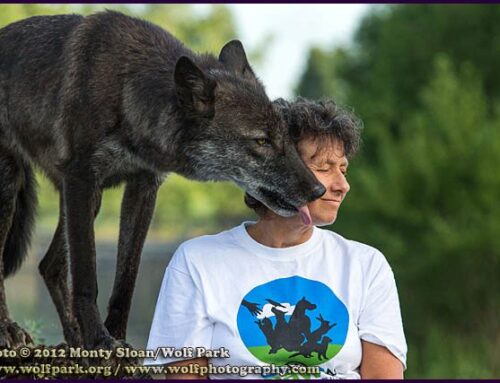I recently had a brief, somewhat unpleasant email exchange with someone living with a 100 pound American Bulldog that was aggressive, to the point of having bit the owner in the face. From the description of the dog- it had been a timid, cowering in the corner puppy- it sounded as though the dog had learned some effective methods for keeping people and other dogs away from it. The owner was asking about ways to work with a dog that was constantly trying to ‘dominate’ them.
I encourage people to find a local trainer who can help them since it is impossible to accurately assess a dog’s behavior and then explain how to work with them, via email. It was not my goal or purpose when I created the fearfuldogs.com website. But I understand and empathize with owners who are struggling to find someone they can contact for help. This owner was very clear that they were not willing to pay a trainer to help them with their dog. The potential expenses from vet, doctor or lawyer bills would far exceed the cost of a trainer, but this argument was not enough to sway them.
The exchange got unpleasant when I tried to explain that their dog probably did not have a dominance problem, it likely had a fear problem. They assured me that they ‘knew’ what dominance looked like: the dog was jumping on them and other dogs, it was growling, snapping and biting, they weren’t stupid! I tried explaining it this way-“If you were afraid of snakes and I came at you with a snake and you pushed me away, were you trying to dominate me?” If you want to use the dictionary definition then sure, the dog is trying to control its environment and if it happens to weigh 100 pounds it stands a good chance of doing that by using the tools at hand, its body and teeth.
The problem is that if you handle a dog with fear issues as though you have a confident dog that is a bully, you are likely to make the fear problem worse. Indeed you might even make the bullying problem worse in a confident dog as well.
If you are five years old and are afraid of someone you might scream, cry, try to run & hide or perhaps even struggle (doing little damage if what you’re afraid of is bigger than you). But if you’re an adult and someone threatens you (we feel fear because we feel threatened in one way or another) and you happen to have a pistol in your hand, you might pull the trigger. In the future you might decide that brandishing a weapon is more effective than cowering, pleading or running. As dogs get older and bigger they too can discover that certain behaviors are more effective in making what they want to have happen, happen. So they give up the subtle doggie communications of ‘looks aways’, yawning, lip licking, rolling over, cowering, even moving away, and replace them with displays of aggression. If subtle displays of aggression don’t work, lip raises, growls, air snaps, they may learn that more intense displays of aggression, lunging, barking, biting or muzzle punches, do.
Trying to stop an aggressive response by making the dog feel bad about it, by using punishment, is not a long term solution. Yelling at, yanking on, hitting or kicking a dog that is behaving aggressively can backfire. The dog may redirect its energy toward the handler or something else nearby. For many dogs the application of any kind of punishment only makes a bad situation worse. They are punished AND the scary thing does not go away. For long term success in changing a reactive dog’s behavior you must change the dog’s emotional response to what scares them AND teach the dog an appropriate behavior which not only works to keep bad things at bay, it provides other rewards as as well.
In a court of law if a person injures or kills someone who has threatened them they will likely be treated with leniency. Unfortunately when a dog threatens or bites someone they will not be shown the same leniency, nor should it necessarily be the case that they are. As much sympathy as I have for a fearful dog that bites, it poses a very real threat. In a court of law and opinion, aggressive dogs usually lose. Fearful dogs who are treated as though they have a dominance problem are likely to become more aggressive, not less. Before your dog needs a lawyer, find a trainer that understands fear-based aggression and how to help dogs that exhibit it.





